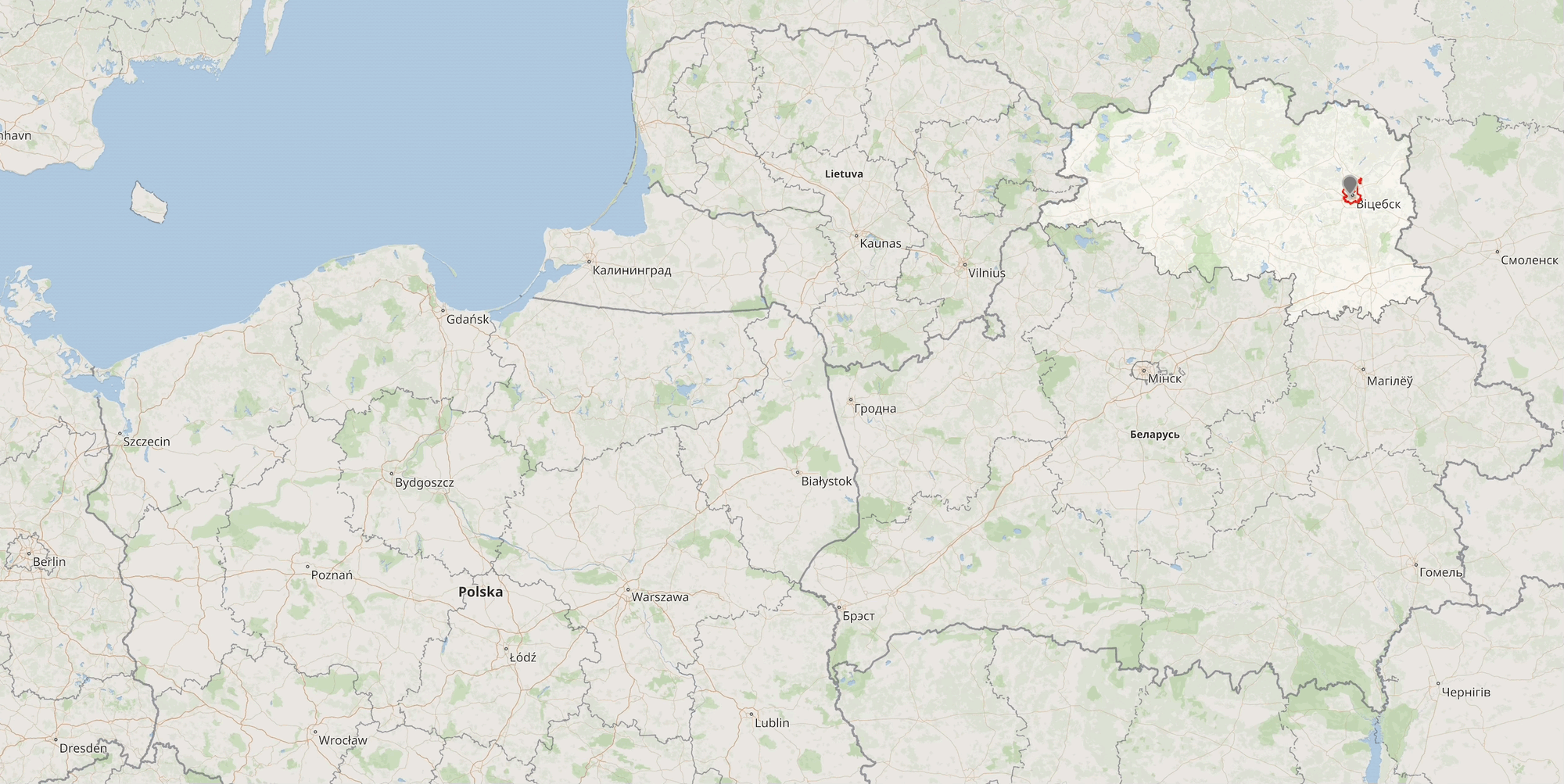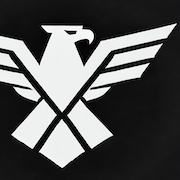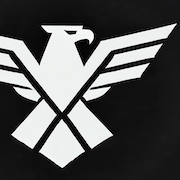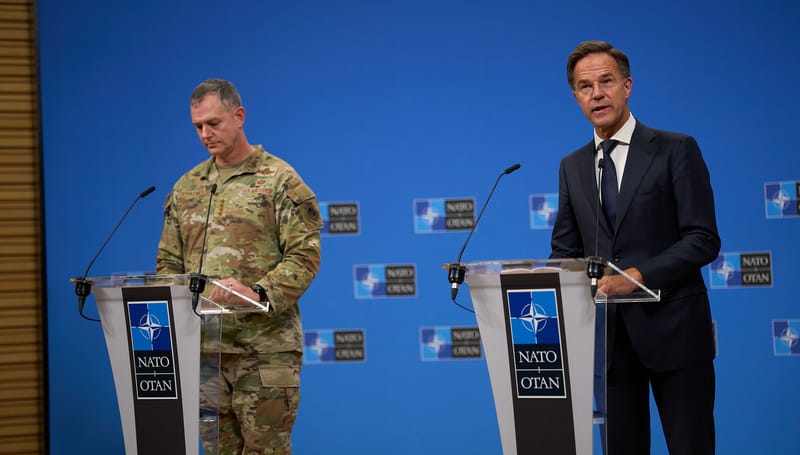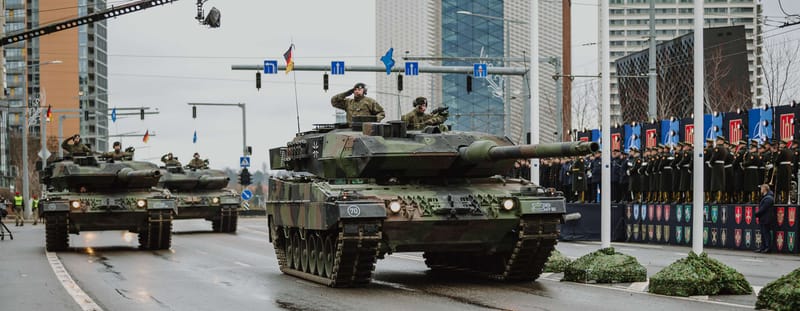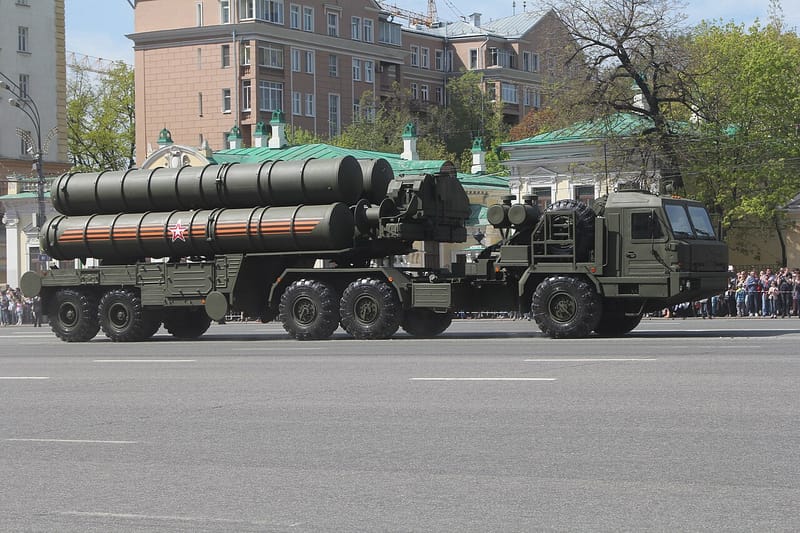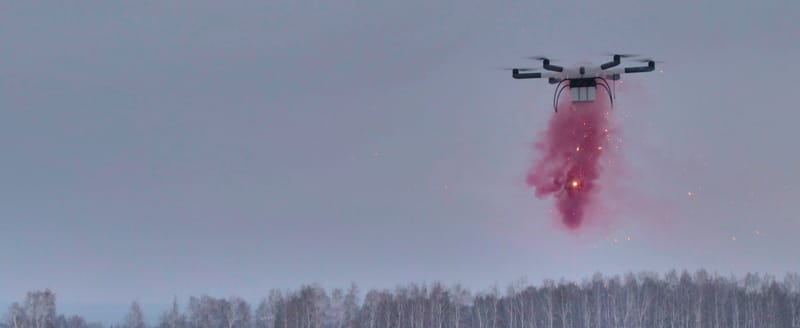Poland’s Homeland Defence Act 2025: NATO’s Eastern Anchor Becomes Operational
Poland’s Homeland Defence Act 2025 marks a shift from blueprint to reality. With Abrams, F-35s, East Shield, and U.S. FMF loans, Warsaw has become NATO’s eastern anchor.
Key insights of Poland's HDA update in September 2025:
- Poland has become NATO’s eastern anchor — the regional benchmark in scale, speed, and U.S. alignment.
- Yet its rapid buildup creates a paradox — stronger deterrence, but pressure on NATO cohesion and integration.
From Legislation to Structural Change
When Großwald last reviewed Poland’s Homeland Defence Act (HDA) in March 2025, it was still largely a legislative and budgetary blueprint. Six months later, procurement deliveries, force expansion, and the first segments of the “East Shield” border system have moved the program into visible structural change across NATO’s eastern flank.
Warsaw’s trajectory has become a benchmark: other allies — Germany, the Baltic States, Romania, Czech Republic, Slovakia — are selectively emulating elements of the HDA, but none match Poland’s scale, speed, and integration.
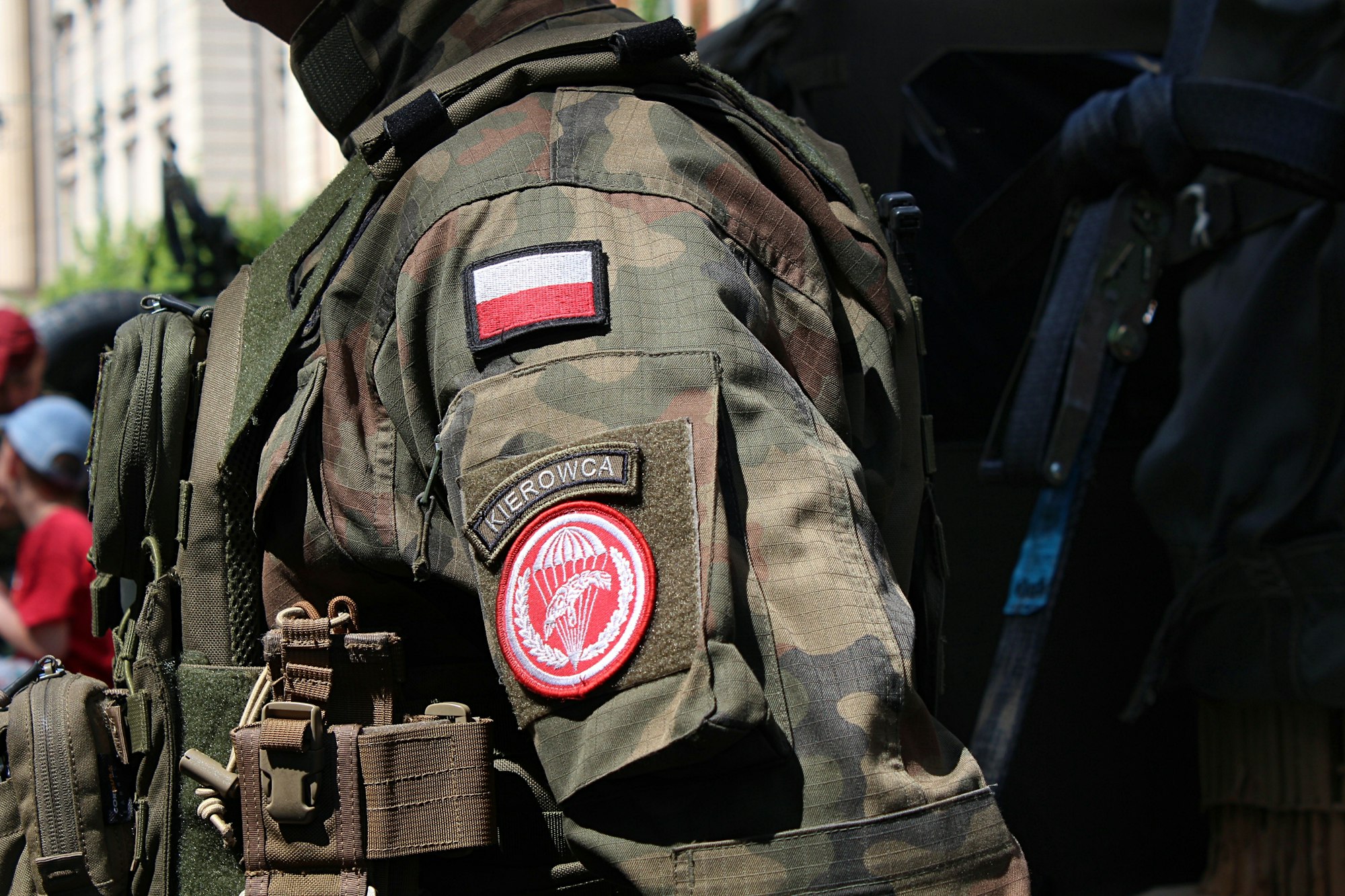
What’s Changed Since Early 2025
By autumn 2025, the Homeland Defence Act is producing tangible results: frontline units are rearming, border defenses are taking shape, and Poland’s role as NATO’s eastern anchor is now visible in hardware.
- Abrams battalions entering service: The 18th Mechanized Division has begun rearming with the first M1A2 SEPv3 Abrams; Poland is the only continental ally fielding the U.S.’s most advanced MBT.
- K2 and K9 deliveries: South Korean K2 Black Panther tanks and K9 Thunder howitzers are arriving in serial batches, complementing domestic Krab artillery.
- F-35 pilot training pipeline: The first Polish pilots graduated from U.S. training in mid-2025; full operational integration of 32 F-35A remains on track for 2026–2027.
- Ammunition capacity surge: Warsaw has invested PLN 3 bn (€750m) into new 155 mm production lines. Output is still ramping, but Poland is on a trajectory to become a regional supplier for Ukraine and Baltic allies.
- Apache program locked in: The acquisition of 96 AH-64E Apaches under the Kruk program, financed through U.S. Foreign Military Financing (FMF), will decisively shift Central Europe’s rotary-wing balance once deliveries begin.
- East Shield fortifications: Sections of the planned ~800 km “Tarcza Wschód” barrier with Belarus and Kaliningrad are now operational. Physical barriers are being paired with sensor, radar, and counter-UAS systems, though full integration will stretch into 2026.
Reactions from Neighbors
Poland’s rapid acceleration has set a benchmark that others are copying selectively — but always at smaller scale, slower pace, or without the same structural backbone.
- Germany: Berlin is still struggling to make Division 2025 fully operational. Its order of 105 Leopard 2A8s delivers only from 2027, underlining the gap with Poland’s accelerated posture.
- Baltic States: Vilnius has signed for 44 Leopard 2A8s with a domestic assembly component. Latvia focuses on artillery and air defense, but has not ordered MBTs. All three spend ~3% of GDP on defense, citing Poland as a model of scale but constrained by fiscal limits.
- Romania: Bucharest has mirrored Warsaw with F-35 procurement (32 aircraft) and Abrams approval (54 tanks), but lacks a binding homeland defense law comparable to the HDA.
- Czech Republic & Slovakia: Prague has ordered 24 F-35As and 44 Leopard 2A8s; Slovakia is modernizing with F-16 Block 70s. Both pursue selective upgrades, but remain in Poland’s shadow.
NATO & U.S. Angle
Two U.S. FMF loan guarantees — $4B in December 2024, and another $4B in July 2025 — have entrenched Warsaw–Washington alignment. Together with earlier Patriot, HIMARS, and Abrams contracts, these packages place Poland as NATO’s de facto heavy land power on the continent.
Joint U.S.–Polish maneuvers in 2025, including exercises near the Suwałki Gap, have reinforced Warsaw’s role as the forward integration point for U.S. divisions in Europe.
U.S. commanders increasingly cite the HDA framework as the reference structure for deterrence in the East, implicitly contrasting Warsaw’s momentum with Berlin’s slower reforms.
Strategic Consequences (Fall 2025)
Beyond procurement milestones, Poland’s Homeland Defence Act is now shaping the alliance’s balance of power, fiscal debates, and industrial trajectories.
- Poland as template: The HDA has become a regional benchmark against which NATO partners assess their own modernization trajectories.
- Economic strain: Defense outlays reached ~4.7% of GDP in 2025, with Warsaw signaling ≈5% in 2026. This scale sustains deterrence but fuels debates on fiscal sustainability, sovereign risk, and budget trade-offs.
- Interoperability paradox: Poland’s rapid build-up risks outpacing allies’ integration capacity — particularly Germany and Hungary — raising friction within NATO force planning.
- Industrial pivot: Technology transfer deals with South Korean and U.S. firms are embedding an indigenous defense-industrial base absent before 2022, positioning Poland as both a consumer and emerging supplier, with financing opportunities for joint ventures and defense bonds.
Conclusion: Warsaw as Eastern Anchor
Two U.S. FMF loan guarantees — $4B in December 2024 and another $4B in July 2025 — have entrenched Warsaw–Washington alignment. These loans add to earlier Patriot, HIMARS, and Abrams programs, making Poland the single largest recipient of U.S. military financing in Europe.
Fact: At the operational level, large-scale drills in 2025 — including exercises near the Suwałki Gap — have integrated Polish units more closely with NATO forces. U.S. and NATO communiqués consistently underline Poland’s role in eastern reinforcement planning.
Analysis: Taken together, this positions Poland as NATO’s de facto heavy land power on the continent — a capability fielded at speed, in contrast to Germany’s slower reforms. Within U.S. policy debates, Poland increasingly functions as a strategic lynchpin: a state able to anchor allied deterrence in the East.
Analytical outlook: The bilateral relationship is becoming symbiotic in practice, if not yet in treaty language. Poland gains unmatched security guarantees, while the U.S. secures a dependable anchor in Europe as transatlantic burden-sharing frictions deepen. The exact balance of obligations and expectations remains fluid, but the trajectory is clear: Warsaw has shifted from blueprint partner to operational anchor.
